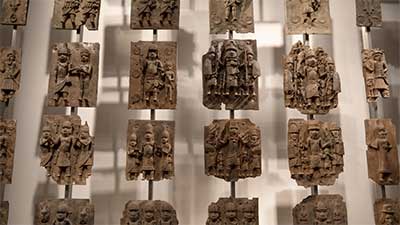Date : 13/07/2023
Relevance – GS Paper 1 - Impact of colonialism on India, GS Paper 2 - International Relations
Keywords – Cultural Treasures, Imperial Domination, Kohinoor Diamond
Context –
The recent decision by the Netherlands to return looted artefacts to Indonesia and Sri Lanka has reignited the debate on whether colonial countries should hold on to cultural treasures plundered during the era of imperial domination.
The Urgency of Restitution:
Numerous countries, including India, have demanded the return of cultural artefacts, such as the Elgin Marbles and the Kohinoor diamond, from former colonial powers. While the British have shown reluctance, they have repatriated some Benin Bronzes to Nigeria. The return of these artefacts serves as a moral obligation owed by the West to its former colonies, symbolizing justice and acknowledging the misappropriation of cultural heritage.
Limited Impact of Restitution:
It is crucial to recognize that returning stolen property cannot fully heal the trauma inflicted by colonialism. The atrocities endured and lives lost cannot be quantified in financial terms. However, the return of cultural artefacts represents a step toward moral justice, considering that the wealth and success of former colonial powers were built on the exploitation of their colonies.
Challenges and Solutions:
Restitution of looted colonial-era artefacts, unlike financial reparations, is a more viable solution. While the economic gains extracted during colonial rule cannot be reclaimed, individual stolen pieces held in museums can be returned, acknowledging their symbolic value. Similar to the repatriation of Nazi-era art, the principle of returning looted colonial treasures is justifiable.
The Symbolism of the Kohinoor:
The presence of the Kohinoor diamond in the Tower of London symbolizes the injustices perpetrated by the British Empire. Its return, even as a symbolic gesture of expiation, would serve as evidence of the looting, plunder, and misappropriation that defined colonialism. Hence, it is imperative for the diamond to be repatriated to its rightful place.
The Need for Moral Atonement:
Financial reparations alone cannot address the question of retrospective justice for colonialism. True atonement requires three significant actions: teaching unadulterated British colonial history in schools, establishing a museum in the Imperial capital that highlights the horrors of colonialism, and offering a formal apology to the victims of colonialism. These measures would demonstrate a genuine commitment to rectify historical wrongs.
A Call for British Atonement:
Though the present British government cannot be held accountable for colonialism, the nation bears the responsibility to atone for the past. Taking inspiration from Canadian Prime Minister Justin Trudeau's apology for the Komagata Maru incident, a sincere apology from Britain is crucial. Additionally, the establishment of a Museum of Colonialism would demonstrate a commitment to learn from history.
Conclusion:
Restitution of colonial artefacts, alongside moral atonement, represents a significant step towards addressing the historical injustices inflicted by colonial powers. The return of stolen cultural treasures, acknowledgment of past wrongs, and genuine contrition are vital for fostering healing and understanding. Only through such actions can true moral atonement be achieved.
Probable Questions for UPSC Mains Examination
- Discuss the significance of returning stolen cultural artifacts as a moral obligation owed by former colonial powers. How does the act of restitution contribute to addressing the injustices of colonialism? (10 Marks, 150 Words)
- Apart from financial reparations and the return of artifacts, explain the concept of moral atonement in the context of addressing colonialism. Discuss the key measures that can facilitate moral atonement and their significance in rectifying historical wrongs. (15 Marks, 250 Words)
Source – The Hindu







